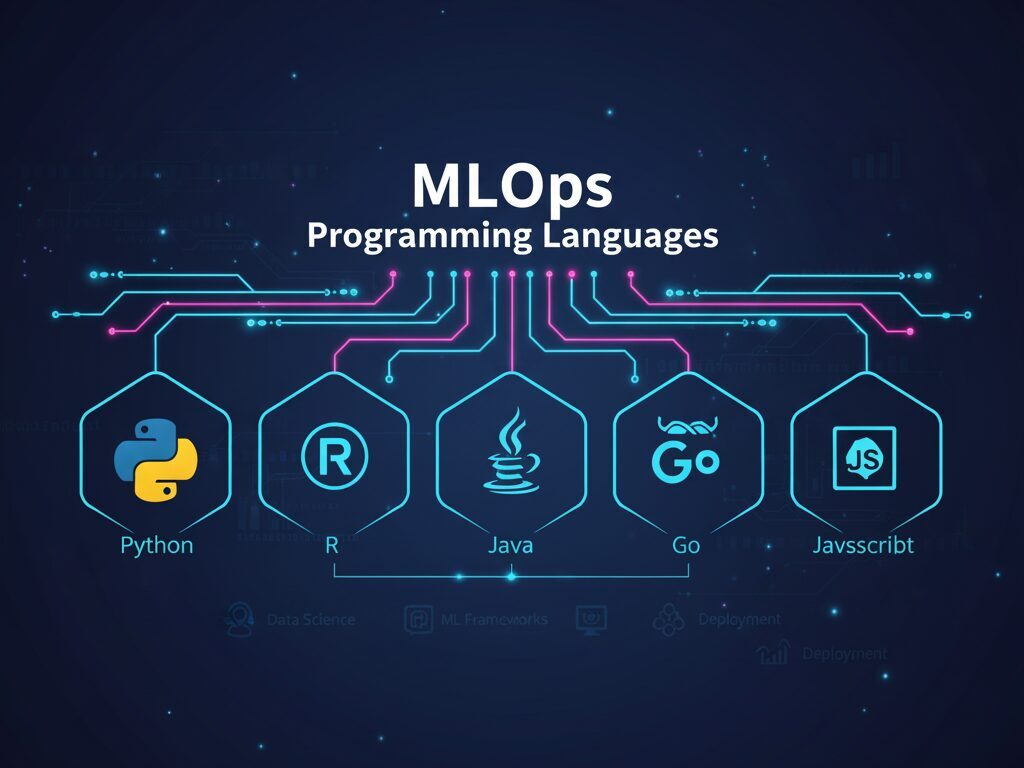MLOps (Machine Learning Operations) has quickly become one of the most in-demand fields in tech. As more organizations scale their AI initiatives, the need for professionals who can build, deploy, and maintain machine learning models in production is skyrocketing.
But here’s the question many aspiring engineers ask: What’s the best programming language for MLOps?
The truth is, there isn’t just one. While Python is the clear leader, successful MLOps engineers often combine multiple languages and scripting skills to manage data pipelines, automate workflows, and integrate models into production systems. Let’s break down the top languages for MLOps.
What is MLOps in programming?
MLOps in programming is the practice of applying software engineering and coding skills to the machine learning lifecycle. It involves writing code for model training, deployment, automation, and monitoring. For beginners, the focus often starts with Python, SQL, and Bash.

1. Python – The Backbone of MLOps
If you only learn one language for MLOps, make it Python.
- Why it’s #1: Python dominates machine learning, AI, and data science thanks to its rich ecosystem of libraries like scikit-learn, TensorFlow, PyTorch, Pandas, and FastAPI.
- Where it’s used in MLOps: Writing ML pipelines, automating workflows, building APIs, and deploying models in production.
- Pro tip: Employers expect clean, production-ready Python code — not just Jupyter notebooks.
Our Python courses, from basics to advanced, helps beginners and career changers become job-ready in weeks.
2. SQL – The Language of Data
Behind every machine learning model is data, and SQL remains the standard for querying, cleaning, and managing it.
- Why it matters: Reliable data pipelines depend on SQL for pulling structured data into ML systems.
- Where it’s used in MLOps: ETL pipelines, data validation, and monitoring for data drift.
At WeCloudData, leading data academy in North America: Our SQL courses gives you hands-on experience building SQL-powered pipelines that support production ML.
3. Bash & Shell Scripting – For Automation
MLOps is all about automation, and Bash scripting is a must-have skill for managing environments and workflows in Linux-based systems.
- Why it matters: Scripts save time, reduce errors, and standardize deployments.
- Where it’s used in MLOps: Automating CI/CD pipelines, managing cloud resources, and deploying containerized ML models.
4. Java & Go – For Scalability
While Python handles experimentation, languages like Java and Go are often used in enterprise-scale systems.
- Why they matter: Both languages are fast, scalable, and better suited for production-grade microservices
- Where they’re used in MLOps: Large organizations integrating ML models into complex backend systems.
5. R – For Niche Use Cases
R isn’t a top choice for MLOps, but it still plays a role in statistical modeling, research, and specialized analytics.
- Why it matters: Some teams still rely on R for prototyping models before converting them into Python for production.
Does MLOps require coding? Yes. While some platforms offer no-code or low-code options, professional MLOps roles require strong coding skills in Python, SQL, and Bash, along with knowledge of cloud platforms and DevOps tools.
Which Programming Languages Do MLOps Use? Most MLOps engineers use Python, SQL, Bash, and sometimes Java or Go depending on the scale of deployment. Python is the most widely adopted, making it the best starting point for beginners.
MLOps Coding Skills for Beginners
If you’re new, start with:
- Python for ML pipelines and automation
- SQL for working with data
- Bash for scripting and CI/CD
This combination forms the foundation of MLOps for beginners. At WeCloudData, Within our MLOps tracks or you can opt for them in short courses to guide you through real-world projects, helping you build confidence while working with industry tools.
Why Programming Skills Are the Foundation of MLOps
Is MLOps a skill? Yes — it’s a multidisciplinary skill set that combines programming, data engineering, DevOps, and machine learning. Without programming, you can’t automate or scale ML systems.
By mastering programming, you’ll also position yourself for some of the highest-paying AI/MLOps roles in the market.
Learn MLOps With WeCloudData
At WeCloudData, we go beyond theory. Our short courses and bootcamps give you hands-on practice with the programming skills that matter most for MLOps careers. You’ll learn to:
- Write production-ready ML code in Python
- Build SQL-powered data pipelines
- Automate deployments with Bash scripting
- Deploy real ML models on the cloud (AWS, Azure, GCP)
- Gain project experience that looks great on a resume, GitHub MLOps course portfolio, or Certificate in MLOps
Ready to master the MLOps Program skills employers demand? Explore WeCloudData’s AI & ML Bootcamp and start building your future.
FAQs: Best Programming Languages for MLOps
1. Do I need to learn multiple programming languages for MLOps?
Not at first. Python, SQL, and Bash are enough to land an entry-level role. You can pick up Java, Go, or R later depending on your career goals.
2. Is Python enough for MLOps?
Python is essential, but employers also expect knowledge of SQL for data and Bash for automation. Mastering these three will make you job-ready.
3. Which programming language pays the most in MLOps?
Python-based MLOps roles are the most common and well-paid. Engineers who also know cloud platforms, Java, or Go may earn higher salaries at enterprise companies.
4. How do I start learning programming for MLOps?
Start with Python and SQL through structured training programs. Bootcamps like WeCloudData provide mentorship, capstone projects, and career coaching to help you break into MLOps faster.

